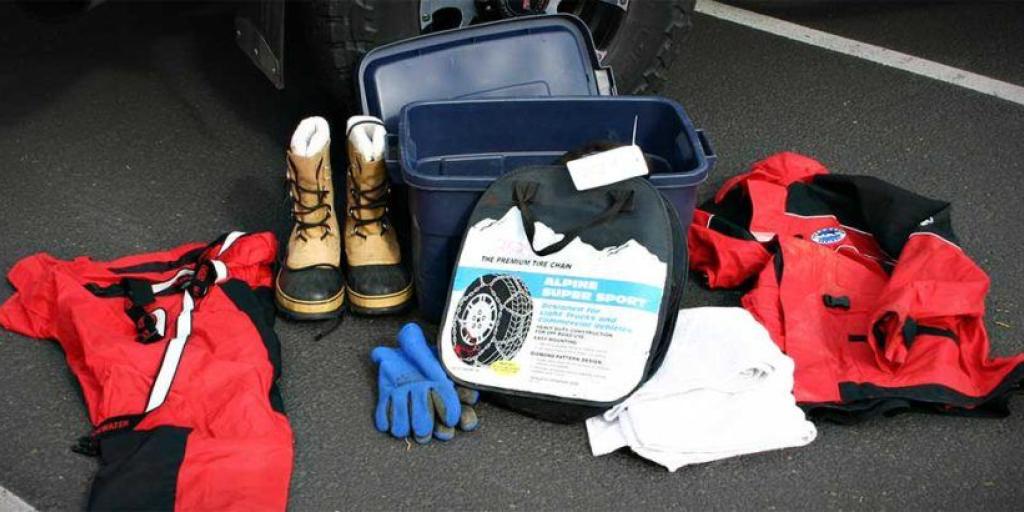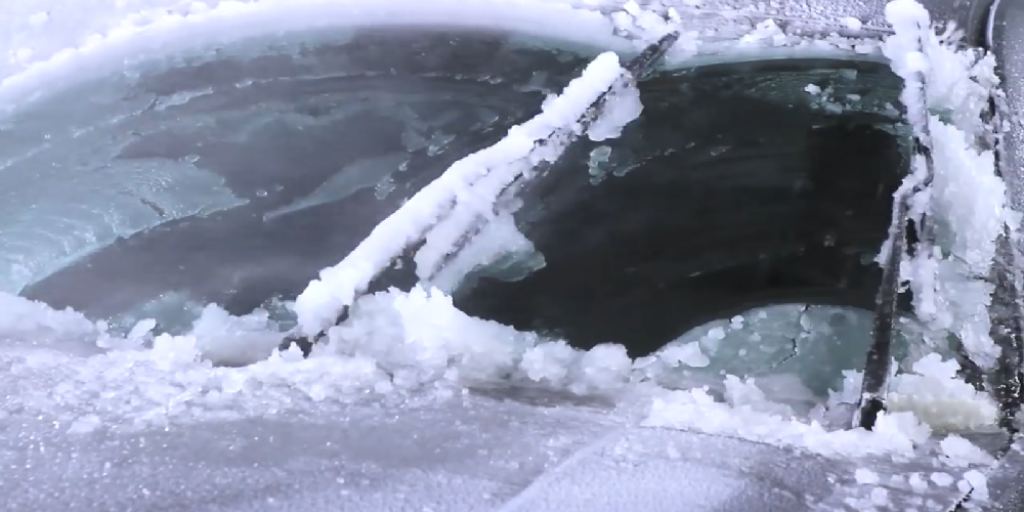1. Start with the Tires
Your SUV’s tires must be in good shape to provide the firm grip needed to traverse over snow terrains. One of the best ways to measure a tire’s shape is through its tread depth. There are several ways to measure tire tread depth. Typically, you measure tread depth in 32nds of an inch, according to the Tire Buyer. New tires come with 10/32nds of an inch of depth, but over time normal wear will cause thinning. To see how thin your tires are you can do the penny test. You do this by taking a penny and inserting it upside down into the tire tread. Next, you’ll want to see how much of the penny shows, as this indicates the depth of the tread remaining on your SUV’s tires. If you see a portion of Lincoln’s head it means your tires are at 4/32nds of an inch, indicating they are worn down and it’s time to change them. Meanwhile, if you notice the tread doesn’t cover any of Lincoln’s head, it means there are 2/32nds of an inch remaining. This equates to your tires being bald, resulting in little to no traction. In addition, many states require you to have tires with tread depth more than 2/32nds of an inch. Therefore, if police catch you driving with tires with this thin depth, you could receive a ticket. Along with the penny test, you can also measure using a tread depth gauge. One of the best I found online was the Milton S-448 gauge, as it’s easy to use and measures from 0” to 1” in 1/32” increments. To reduce tire wear, you can do several things. First, you should have your tires rotated every 6,000 miles. This will reduce one or two tires from receiving the brunt of the work, which leads to them wearing down quicker. Two, you should practice safe driving behaviors, as speeding and braking abruptly regularly creates unneeded pressure on your tires, thus reducing their durability.2. Pack a Winter Safety Kit
It’s important to plan for all contingencies, as you never know what might happen when on the road. To this end, it’s vital to pack a winter safety kit in the event you become stranded. By packing a kit with these supplies, it can make all the difference when you are waiting for assistance:- Warm blankets
- A flashlight for vehicle inspection
- Reflector signs, road flares, and double check to make sure your SUV’s emergency lights work well
- Snacks such as protein bars and bottled water
- A first aid kit
- An extra pair or gloves and a winter hat for the elements
- A bag of sand for traction in the event your SUV becomes stuck
- An extra charger for your cell phone
- Roadside assistance through your insurance company or AAA
- A hand crank radio

3. Inspect Wiper Blades and Washer Fluid
Another area of primary importance concerns your windshield. After all, when the weather becomes poor visibility can be challenging. This means you want your wiper blades to work as well as possible. A good rule of thumb is to replace them every six months. One of the best ways to do this is when winter approaches switch out your regular windshield wipers for ones that handle better in the snow. To demonstrate, TRICO makes its Chill Teflon Wiper Blades to handle the colder weather. It does this by adding a Teflon surface protection, which extends the life of the wiper blade. This important because the last thing you want is for your blade to break when trying to get ice off your windshield. A perfect pairing with new winter wiper blades is to change out your old washing fluid. You can find winter washing fluid such as the Rain-X de-icer fluid that has the capability of handling colder elements, up to a certain temperature. This ensures that when you apply the washer fluid it doesn’t freeze on your windshield, creating a dangerous situation due to the limited visibility. Lastly, you’ll also want to inspect your windshield’s spray nozzles for any dust or debris blocking it. If you notice blockage you can free it using a pin or other fine point device. This will clear all obstructions, allowing the nozzles to distribute fluid evenly, which is important when driving in wintry conditions.4. Inspect Your SUV’s Lights
Having good visibility doesn’t just extend to your windshield, it means accounting for other drivers as well. This means having your SUV’s front and taillights operational is of vital importance since you want others to see you, especially in wintry conditions. You’ll also want to test your SUV’s brake lights to ensure they are working as well. If you notice one light is out, replace it immediately. This will keep you safe on the road and eliminate the chance of you receiving a ticket for a malfunctioning light.5. Have Your SUV Inspected Regularly
Regular inspections help reputable technicians gain a familiarity with your SUV and identify small issues. They will test your SUV’s battery, examine the tires, check fluid levels, and more. This is a great way to ensure your SUV is road ready for little expense. Overall, doing these five recommendations will go a long way to making sure your SUV can handle the rigors of winter driving. This will help you gain confidence in knowing that with safe driving behaviors, your SUV will be up to the challenges winter presents to it.
Useful SUV Links
Recommended SUV News & Reviews
2 Minute Review Videos
Jeep Wrangler 4xe - 2 Minute Review
2 Minute Review Videos